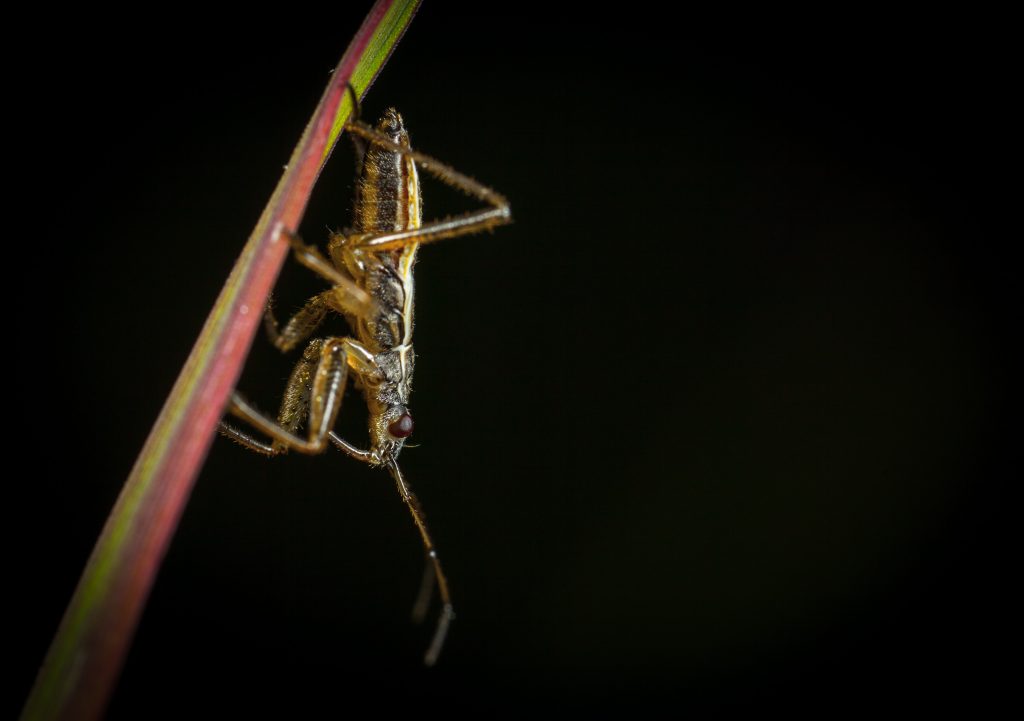Feeder insects are used to feed small reptiles. The most common feeder insects are crickets, black soldier fly larvae, hornworms, and discoid roaches.

Reptile owners all around the world know that insects are the favored food source for reptiles. Insects are packed with nutrients vital for maintaining a reptile’s health.
However, you cannot just feed them the same type of an insect for their whole life. You need to constantly change their diet. Otherwise, your reptile might suffer from malnutrition or lose appetite.
Reptiles also have a sense of taste, so if you feed them the same insect every day, they will gradually be unwilling to eat that particular insect or bug. And if they do not eat enough, they will suffer from malnutrition, vitamin deficiency, and calcium deficiency, which can cause metabolic bone diseases.
Now, let us look at some feeder insects that you can choose to feed your reptile.
1. Black Soldier Fly Larvae
Black soldier flies are medium-sized flies that have a predominantly black body. They are about 16 millimeters long. These small insects are native to North and South America, while some can also be found in Europe.
Recently, it has been discovered that these insects can be found in almost all parts of the world.
Nutritional Value of the Black Soldier Fly
Black soldier flies themselves do not have high nutrition value but their larvae do. Their larvae are very rich in calcium. The Calcium Phosphorus ratio is 3:1 and this is the highest among all other feeder insects.
So if your reptile lacks calcium-based foods, you can feed them black soldier fly larvae. The larvae are 61% water, 18% protein, 14% fat, 4% ash, and 3% fiber. This makes them a good source of fat as well.
2. Horn Worms
Although not very popular, horn worms can still be a great choice as an insect feeder. Their appearance resembles caterpillars. They have small green bodies and horns on their heads.
Nutritional Value of Horn Worms
Horn worms have small fluffy bodies, meaning they have a lot of water. Their body consists of a staggering 85% water, 9% protein, and 3% fat. They do not have any fiber or ash. But you need to keep one thing in mind.
Since they have high levels of water and protein, if you feed your reptiles horn worms every day it may cause diarrhea.
3. Crickets
Crickets are often considered the favorite food of reptiles. There are various species of crickets and they can be found all around the world.
Nutritional Value of Crickets
Crickets may not have a high calcium value, but they are very rich in phosphorus. Crickets are 77% water, 15% protein, 3% fat, 1% ash, and 2% fibre.
From this, we can see that they have very little fat in them, but they are high in moisture.
4. Dubia Roaches
Dubia roaches are a species of cockroaches that are also a very popular choice as feeder insects. They are native to tropical regions and have very small bodies.
Nutritional Value of Dubia Roaches
Dubia roaches are very high in protein, and they are a good source of valuable amino acids. They consist of 66% water, 23% protein, 7% fat, 1% ash, and 3% fiber.
They, however, do not have much calcium in them. But they are rich in phosphorus. Because of these balanced nutrition values, they are overtaking the popularity of crickets.
5. Discoid Roaches
In some certain areas, you may not find the highly valuable Dubia roach. But one roach, the discoid roach, can be found almost everywhere. The reason for them being compared to Dubia roaches is because of their similar nutritional value.
Nutritional Value of Discoid Roaches
Discoid roaches are similar to Dubia roaches, but there are some slight differences. They consist of 66% water, 17% protein, 8% fat, 1% ash, and 3% fiber.
They have slightly lower levels of protein, but higher levels of fat than Dubia roaches. Due to these similarities and their availability, they are used as an alternate feeder insect when Dubia roaches are not available.
6. Silkworms
If you are looking for an alternative to horn worms, then you can try silkworms. Although they are slightly more uncommon than horn worms, they have similar nutrition values, meaning they can be a great alternative.
Nutritional Value of Silkworms
As mentioned before, these insects are similar to horn worms. Their body consists of 79% water, 13% protein, 2% fat, 1% ash, and 3% fiber. But unlike hornworms, they do not have much phosphorus.
As with hornworms, if you feed your reptile too many silkworms, they will suffer from diarrhea because of the high water content.
How to Feed Your Reptiles
Reptiles are predatory animals, meaning in the wild, they prey on their food. So when you feed them insects, make sure the insects are alive and well. If you give your reptiles dead insects, they might not eat them.
Another thing is that some of these insects do not have a high calcium value or vitamins. To compensate for these, you need to feed the insects first. Feed them high calcium supplements and vitamin supplements. That way, when the reptiles eat them, they will receive the necessary nutrients.
Most importantly, do not feed your reptile only one type of insect. Change their diet from time to time. If you feed them one particular insect, they will receive a surplus of one particular nutrient. Changing the insect type will ensure your reptile receives a balanced diet.
Final Thoughts
There are a lot of insects out there that you can feed your pet reptile. But if you want to ensure your reptile gets the right amount of vitamins, select the right feeder insects. Having a wide variety of staple feeder insects will ensure a healthy life for your reptiles.
















Add Your Comment